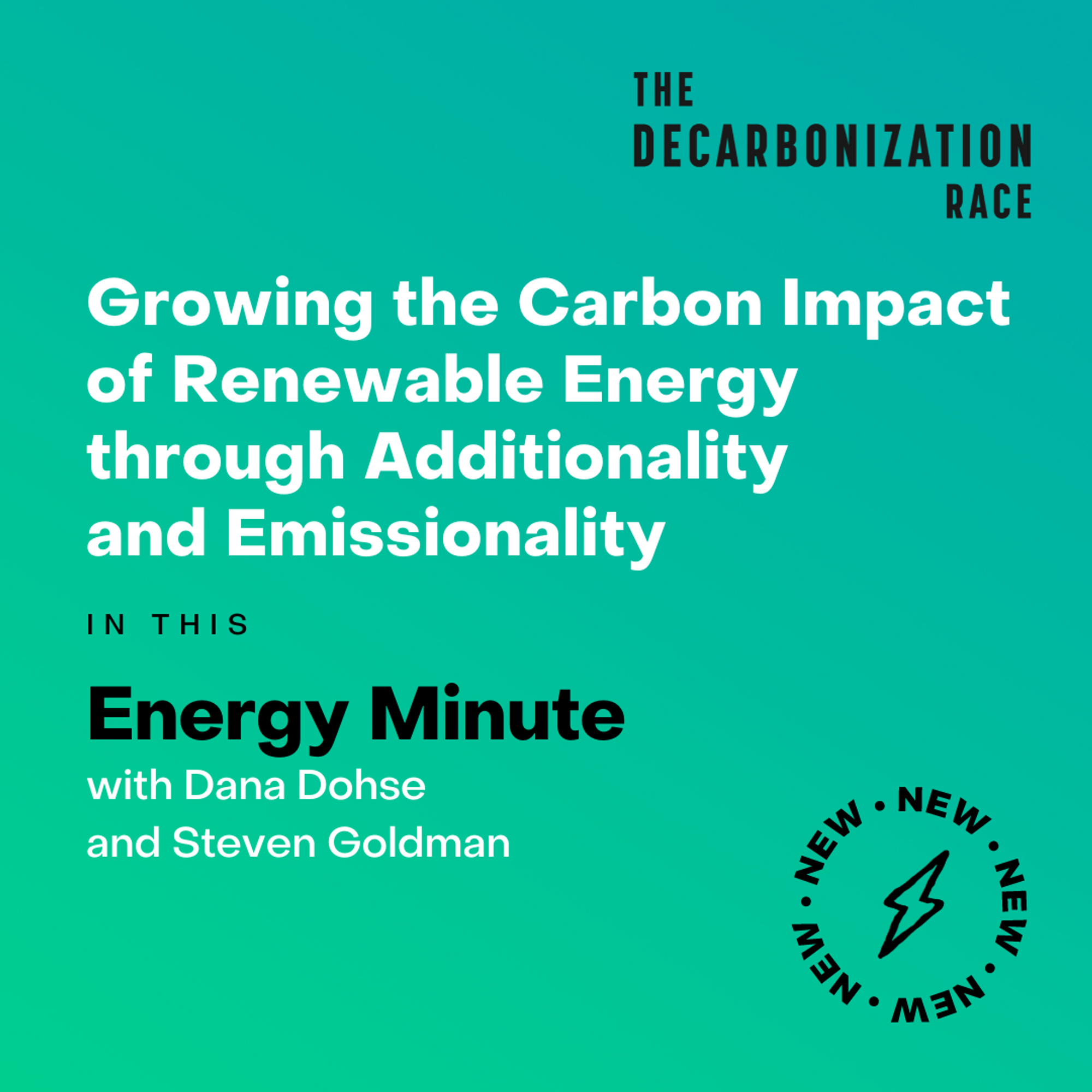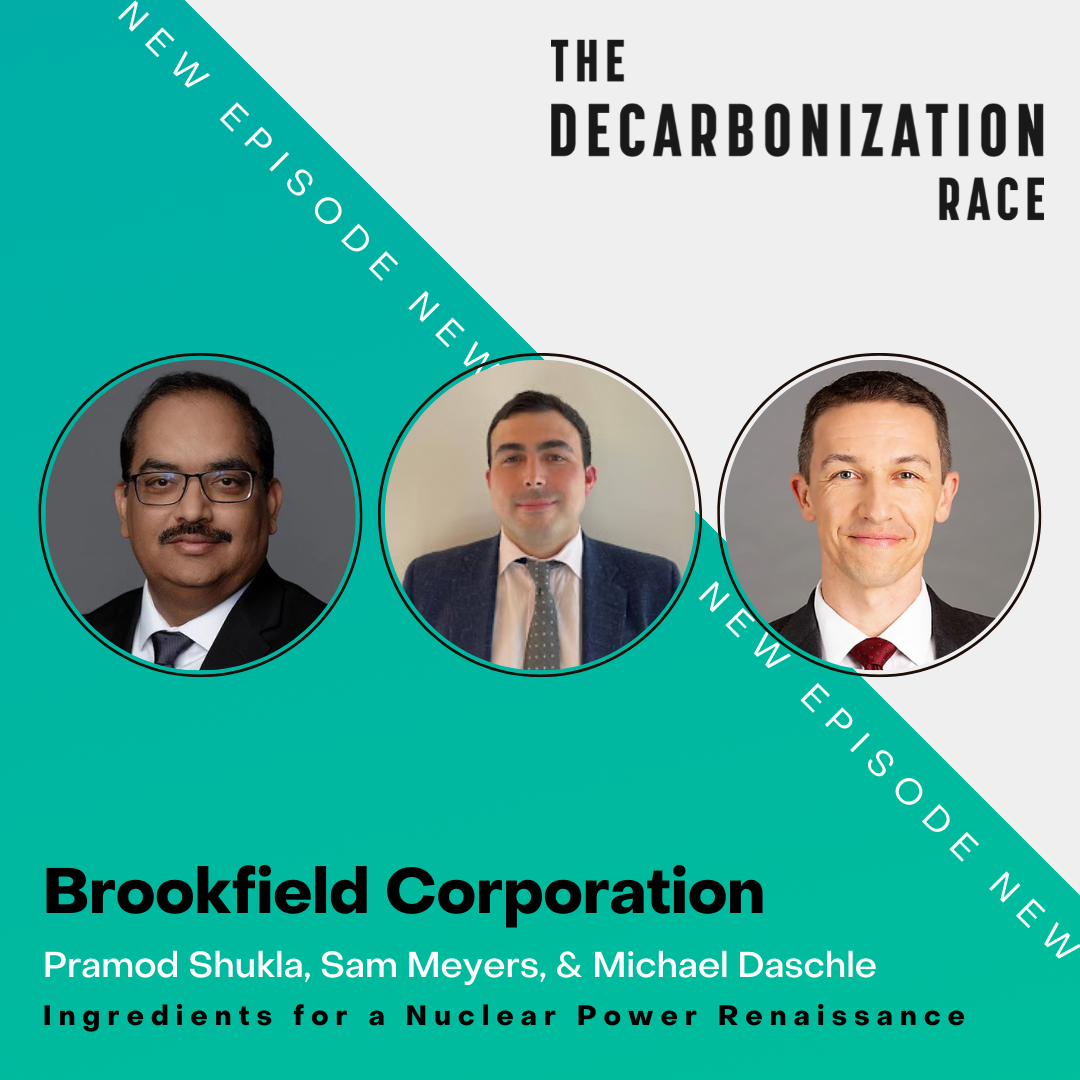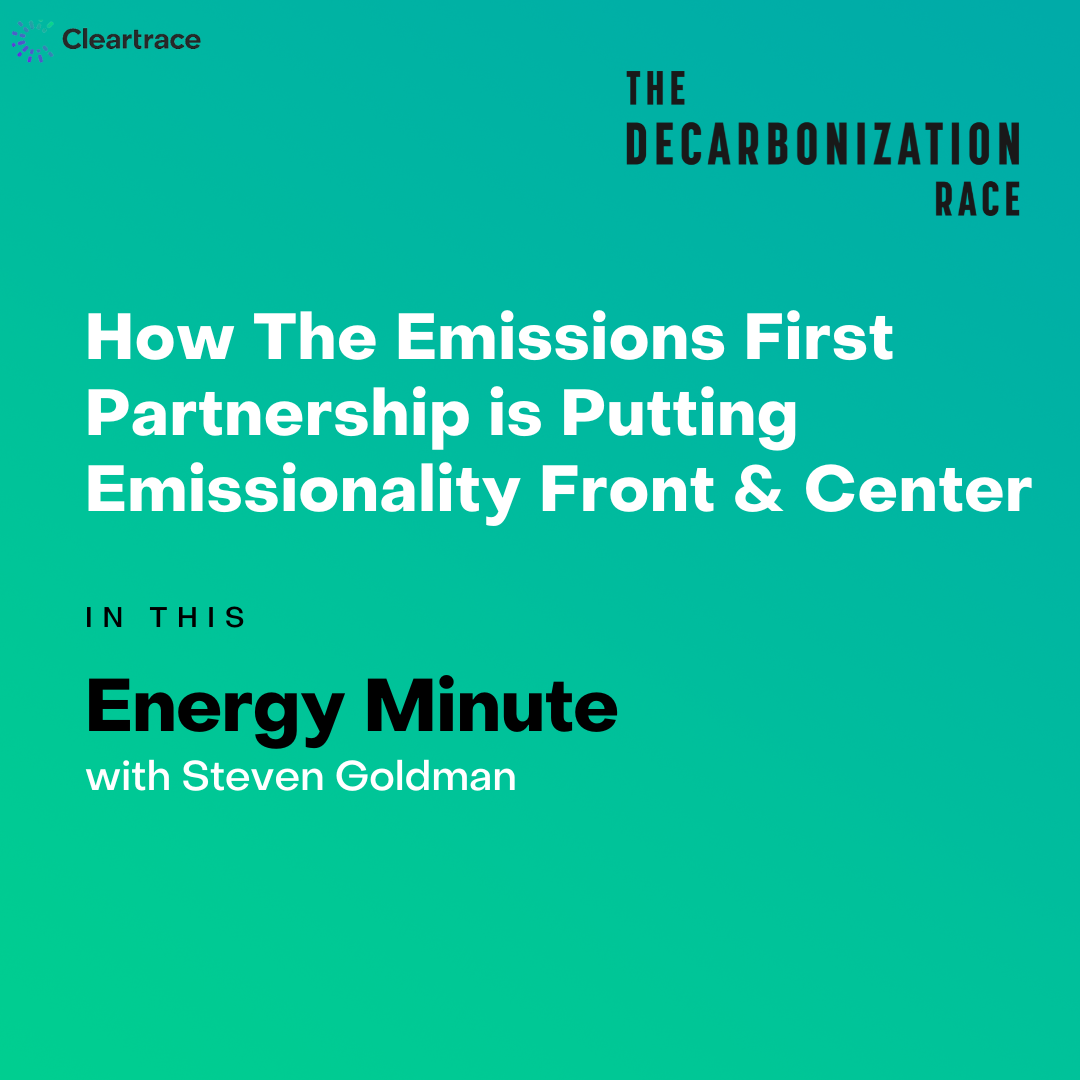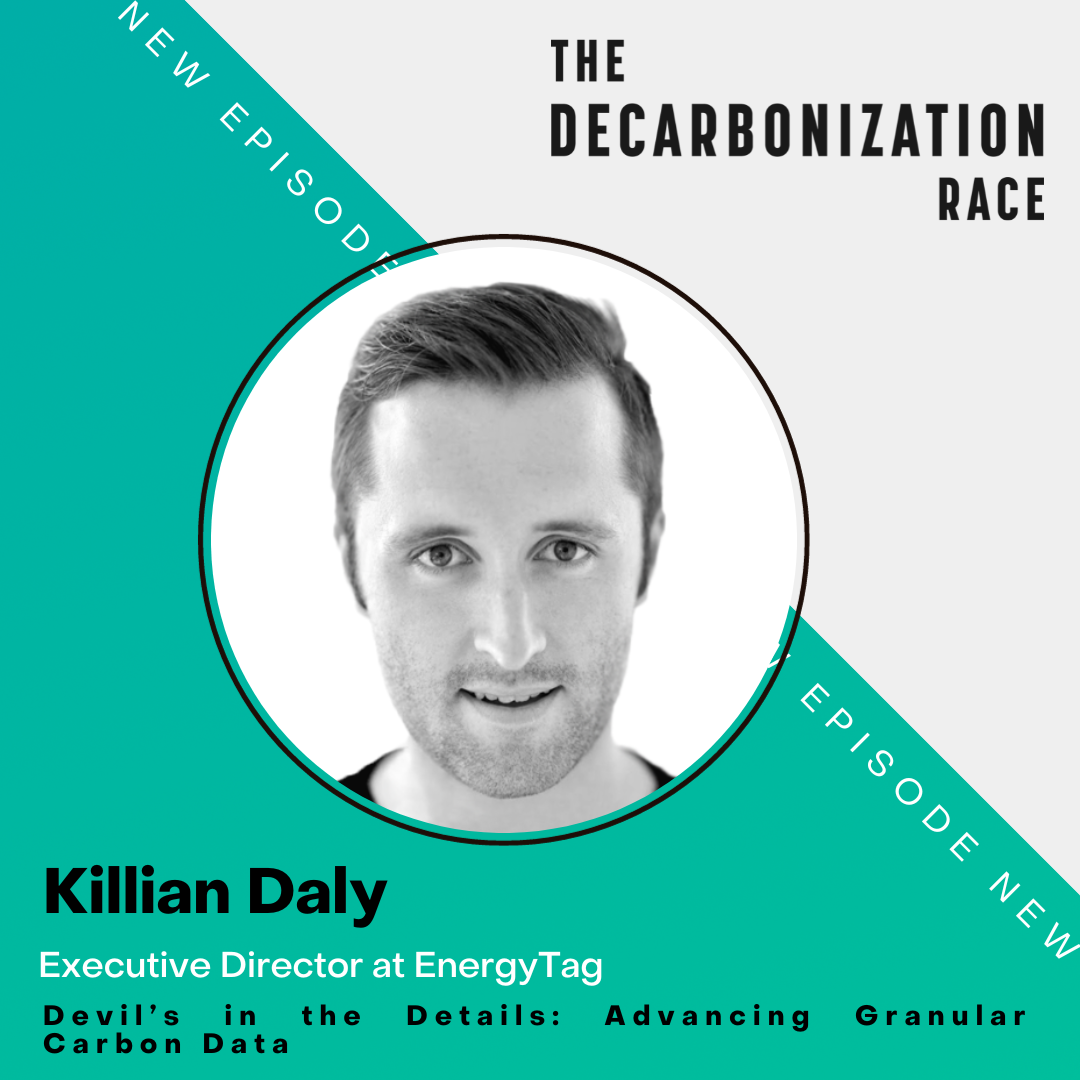Energy Minute: Growing the Carbon Impact of Renewable Energy through Additionality or Emissionality
In this Energy Minute segment, Dana and Steven look at the concepts of additionality and emissionality, and what they each mean for companies evaluating whether to procure clean energy through financial instruments like RECs or virtual power purchase agreements or working to directly source that power through physical PPAs or local green power/tariff programs.

In this Energy Minute, Dana Dohse and Steven Goldman discuss the importance of examining the marginal impact of different energy sources – using principles like additionality and emissionality – and why businesses may want to consider them in during clean energy procurement processes. Some of the world’s biggest tech companies, including Amazon, Apple, Microsoft, Meta, and others are looking hard at their energy procurement through one of these lenses, with different outcomes in mind for the facilities they power or the grids they operate on.
In this segment, Dana and Steven look at the concepts of additionality and emissionality, and what they each mean for companies evaluating whether to procure clean energy through financial instruments like RECs or virtual power purchase agreements or working to directly source that power through physical PPAs or local green power/tariff programs.
Key Takeaways
- Once it is generated for transmission and delivery, all electricity fundamentally is identical – you can’t distinguish between electrons. RECs are a financial construct that allows the environmental value of clean energy generated to be bought and sold, either bundled with the energy being sold or separately (“unbundled”).
- Additionality value refers to when purchasing clean energy is contributing to new capacity being added to the grid, rather than purchasing clean energy from a project that has already been in operation. For an offtaker, focusing on additionality means purchasing clean energy in ways that drive deployment of new projects in general
- Emissionality value refers to purchasing clean energy from projects that are have lower marginal emissions compared to the local average emissions factor, in effect reducing emissions on the local grid by becoming part of the local mix. For an offtaker, focusing on emissionality means procuring from projects that have carbon reduction impacts on the grid in which your facilities are operating.
Resources
- Nature Climate Change journal article, “Renewable energy certificates threaten the integrity of corporate science-based targets“
Transcript
Dana Dohse: Welcome to this week’s Energy Minute, brought to you by Cleartrace. I’m Dana Dohse.
Steven Goldman: And I’m Steve Goldman.
Dana Dohse: On this episode, we’re going to talk about some of the principles behind maximizing the carbon impact of renewable energy procurement or what comes next beyond RECs.
Steven Goldman: We hinted at the concepts that we’ll touch on at the end of a previous segment, for example, additionality and emissionality.
Dana Dohse: But let’s first rewind a little bit and talk about RECs and why we’re having this discussion.
Steven Goldman: The core concept is that all electricity fundamentally is identical. You can’t distinguish between electrons. From a generation, a transmission, and a consumption point of view, you can’t track an individual electron. So the use of renewable electricity generation on shared distribution grids is defined and determined by the contracts for how it’s generated and bought.
Dana Dohse: Right. And that’s why RECs exist, because the RECs are the green wrapper that surrounds that electron that allows the market to buy and sell them separately from the actual energy itself.
Steven Goldman: Exactly. That’s how the suppliers and utilities can state with clarity that they’re delivering renewable electricity to specific customers, whether that’s through state programs or in response to voluntary demand. And that way, grid customers can claim the use of that electricity.
Dana Dohse: We’ve touched on some of the problems with RECs in previous episodes, but there’s a recent study by the Nature Climate Change Journal that was particularly interesting. They talked about the fact that the actual reduction in carbon that’s claimed by a REC could be way lower if it’s not driving new projects.
Steven Goldman: Exactly. We can distinguish between there’s RECs being generated by existing projects that could have been in operation for 10, 20, even 30 years. There’s hydro assets, there’s solar assets that have been in operation that long, even wind assets. And those assets are already on the ground. They’re already producing power. Whereas, if you are saying that RECs or specifically procured power through a virtual power purchase agreement or a physical power purchase agreement, you can actually say this is driving a new project. And that’s what brings us, I think, to the principles we’re going to talk about today.
Dana Dohse: So that brings us to additionality. Let’s start there. So additionality means that when you purchase a new project that it’s actually bringing new renewable energy onto the grid. So in a business as usual scenario, the project would not have been built and put into operation.
Steven Goldman: It means offset buyers can say with certainty that they are reducing emissions, that their purchase of electricity brought a new project onto the grid that is taking the place essentially of other generation that would have been putting power on the grid.
Dana Dohse: So instead of putting new solar on that’s displacing wind, for example, you’re displacing a dirtier form of energy, whether that’s natural gas or something else.
Steven Goldman: Right. Putting solar and wind generation onto the grid, whether it’s solar, which is going to peak generation during the day or wind that it tends to be heavier at night, you’re reducing the need to run coal plants. You’re reducing the need to run gas generation.
Dana Dohse: So that brings us back to the topic of RECs, because RECs have no additionality requirement, which is really one of the key critiques. So if you’re a renewable energy buyer and you’re buying RECs to really further the decarbonization of your own operations, the fact that there’s no requirement could really jeopardize the whole goal.
Steven Goldman: Because you’re buying power, the assumption is that’s bringing new generation onto the grid, but you can’t say that for sure. Now, what the common assumption is today is that power purchase agreements, which are a different type of instrument where you’re essentially leasing part of the capacity of a power plant, does lead to additional renewable energy production and emissions reductions with it because they’re getting a long-term power price when you sign that contract, the developer of that asset or the owner of that asset, which de-risks the new project and allows access to project finance. Essentially, it’s ensuring that there’s a reason for them to build it, that they have a buyer who’s going to offtake that much capacity. And that’s what we’re seeing a lot more of in the corporate world now. A lot of the big tech companies, Amazon, Apple, Microsoft, they’re all signing contracts with developers and power producers for shares of renewable energy projects to ensure they will get billed.
Dana Dohse: One lens that corporates can take if they’re interested in moving past the traditional RECs is borrowed from Google. So they prioritize contracts based on three criteria. First, bringing new sources of green power on the grid rather than sourcing renewables from built or operating projects. So looking for that new additionality. Second, buying power from within the same grid region as its data centers. So looking for that location lens. Are we actually adding renewables onto the same place? And then third, creating positive impact in the industry by providing capital for renewable energy project developers.
Steven Goldman: Exactly. The whole principle of additionality is expanding the pie. The only way to displace thermal generation, coal-based power plants, gas-based power plants is to put new capacity onto the grid that can take its place and serve in roughly the same way. So, Google’s approach is to make sure that on the grids in which it’s operating, they’re trying to drive the development of those new assets.
Now, the flip side of that is a concept called emissionality. The difference there is where additionality is focused on the overall quantity of renewable energy available, regardless of where it is, ideally there’s some sense around time and place, that it’s producing electricity where it needs to be used. But the idea is that overall, new projects are being put onto the grid. Emissionality is a bit different because the idea is that for projects to have emissionality, it needs to be helping reduce carbon emissions on the local grid in which it’s being put, and the focus is on lowering the overall marginal emissions being added to the grid by the power you’re consuming.
Dana Dohse: So this is looking at if you’re putting a new generator onto the grid, what is that displacing and what’s the emissions impact of that rather than strictly is this adding renewables?
Steven Goldman: Exactly. What we are hearing a lot about is that companies want to go procure wind electricity from Texas. Okay. But if you’re putting more wind plants and more wind plants into Texas, there’s not really that much emissionality benefit of that grid because in the regions where it’s going in, it’s already pretty clean. You have a lot of clean energy generation happening already. Whereas, if you were putting wind plants into an area that’s heavier on coal, heavier on gas, then it is having a higher emissionality impact because you’re then hopefully displacing other generation that would have been putting out higher carbon power.
Dana Dohse: It’s another lens for corporates really to take away and say, “Okay. How do we want to evaluate our projects? What’s most important to us and our operations and our sustainability goals? And really, how can we make the biggest impact?”
Steven Goldman: And it’s interesting because Google, from the position papers they’ve put out, seem to be in favor of additionality, whereas Microsoft has come out more in favor of decarbonizing local grids in the areas they’re operating. There’s shades of them in each, and there’s nuance in each, but it’s interesting to see where they’re each placing emphasis.
Dana Dohse: And honestly, I’m happy to see the conversation pushing forward. To me, that’s the biggest takeaway. It’s all a part of this bigger journey towards decarbonization. It’s all about raising our collective awareness of the different issues and trade-offs as we think about how do we all do this for ourselves and for our companies?
Steven Goldman: It’s really important to keep evolving the discussion. I remember 10, 15 years ago, or even today with discussions around deforestation, there were questions of we build forests somewhere else, and it’s all new growth. Isn’t that just fine in terms of taking the place of old growth trees? But you’re not necessarily getting the same carbon impacts out of them. You’re not necessarily putting them back in the same volume. You’re not necessarily getting the same results that you would have had by leaving things alone or by thinking about how to meet your needs differently. With energy, it’s very important to keep looking at how do we make sure we’re having the right impacts that we’re looking for?
Dana Dohse: So let’s sum this up for our listeners. What’s the right approach? How should someone who’s going beyond a REC really think about this?
Steven Goldman: And as with a lot of things we talk about on here, the answer is it depends. When we talk about marginal impact, it means you’re ensuring that you’re shifting your energy procurement in a less carbon heavy direction. But what’s interesting is Google has put out a lot of position papers saying that 24/7 CFE is the end all, be all. And to be fair, we think it’s very important. But we’ve noted on previous episodes, in particular the conversation that Lincoln had with Chris Pennington from Iron Mountain, it’s a tough goal to reach. It’s going to take companies a lot of time. And in quite a few places, there’s not enough renewable energy to procure yet. But it’s important to get on the path and start looking at it through that lens, because knowing it’s going to take a lot of time means you can start taking the first steps.
Dana Dohse: And I think one of the things that I keep coming back to is that 24/7 CFE should be viewed as more of a framework. There’s some principles in there around time and around location that are important and very influential in how we drive decarbonization of the grid. Whether or not you think you can reach 24/7 anytime soon or want to set that as a corporate goal should almost be looked at separately. Let’s get back to this as a principle of how you might procure power rather than something that just seems so unachievable.
Steven Goldman: We need as much renewable energy as we can get onto the grid, and we need it in the places that it’s going to reduce the carbon intensity of the grid in that area. Meaning both of them are right. It’s just a matter of how you procure and when that drives which choices you’re going to make.
Dana Dohse: Absolutely. It’s a journey, not a single endpoint, and it’s a difficult journey that everyone’s trying to navigate and figure out where they are and what their next steps are.
Steven Goldman: But start. Everybody, start.
Dana Dohse: Yes.
Steven Goldman: That’s why we’re all here. That’s why it’s called The Decarbonization Race. That’s why we called it this in the first place is it’s not just even about getting to the starting line, it’s about going down the path.
Dana Dohse: So understanding these concepts can really help your team prioritize not only the power you’re sourcing, but where, when, and how you need to do it to reach the goals you set.
Steven Goldman: And keep tuning in because we’ll keep bringing you information to help you understand how to advance your decarbonization strategy.
Dana Dohse: Thanks for joining us for this week’s Energy Minute. For more of the latest news on sustainability and decarbonization, visit cleartrace.io.









